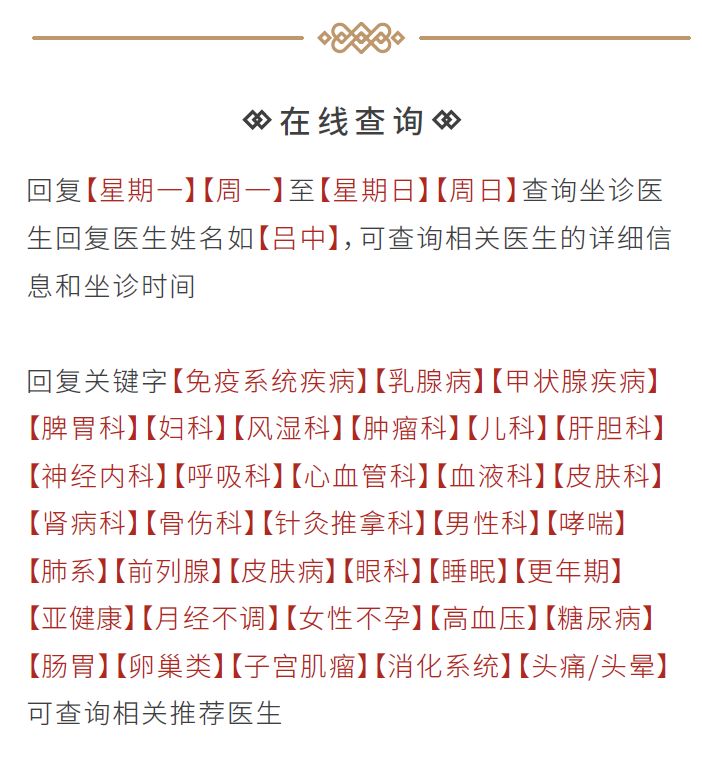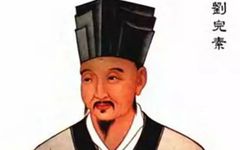
The previous article on lower back pain mentioned the issue of discerning true cold and heat from the tongue. This time, I will elaborate on how to observe cold and heat from the tongue.
Observing the constitution of cold and heat through tongue diagnosis is relatively straightforward. After all, the previous article on moxibustion has already covered some content. Heat is typically categorized into excess heat, deficiency heat, and stagnant heat. For instance, herpes zoster is generally associated with damp-heat in the liver meridian, which is considered excess heat, thus requiring bitter and cold medications.
In contrast, deficiency fire toothache represents deficiency heat. Some individuals may exhibit severe heat symptoms but experience diarrhea when taking heat-clearing medications, which can exacerbate the heat condition. This is likely to be deficiency heat, which I often refer to as false heat.
Stagnant heat can be simply understood as heat generated from lack of circulation. This is the focus of our discussion today. The causes of stagnation can include qi stagnation, blood stasis, phlegm fluid, food accumulation, and cold dampness, among others. Those interested can explore the theory of the six qi transforming into fire and the teachings of Li Shimao on stagnant fire.

Excess heat is akin to heat that can be extinguished with water. Stagnant heat, on the other hand, requires dispersal and circulation. Imagine a room where all the doors and windows are locked; the air cannot circulate, resulting in a higher temperature inside than outside. To cool down, we simply need to open the door and let in some wind, which will reduce the heat.
Now, let’s examine the tongue:
no.1
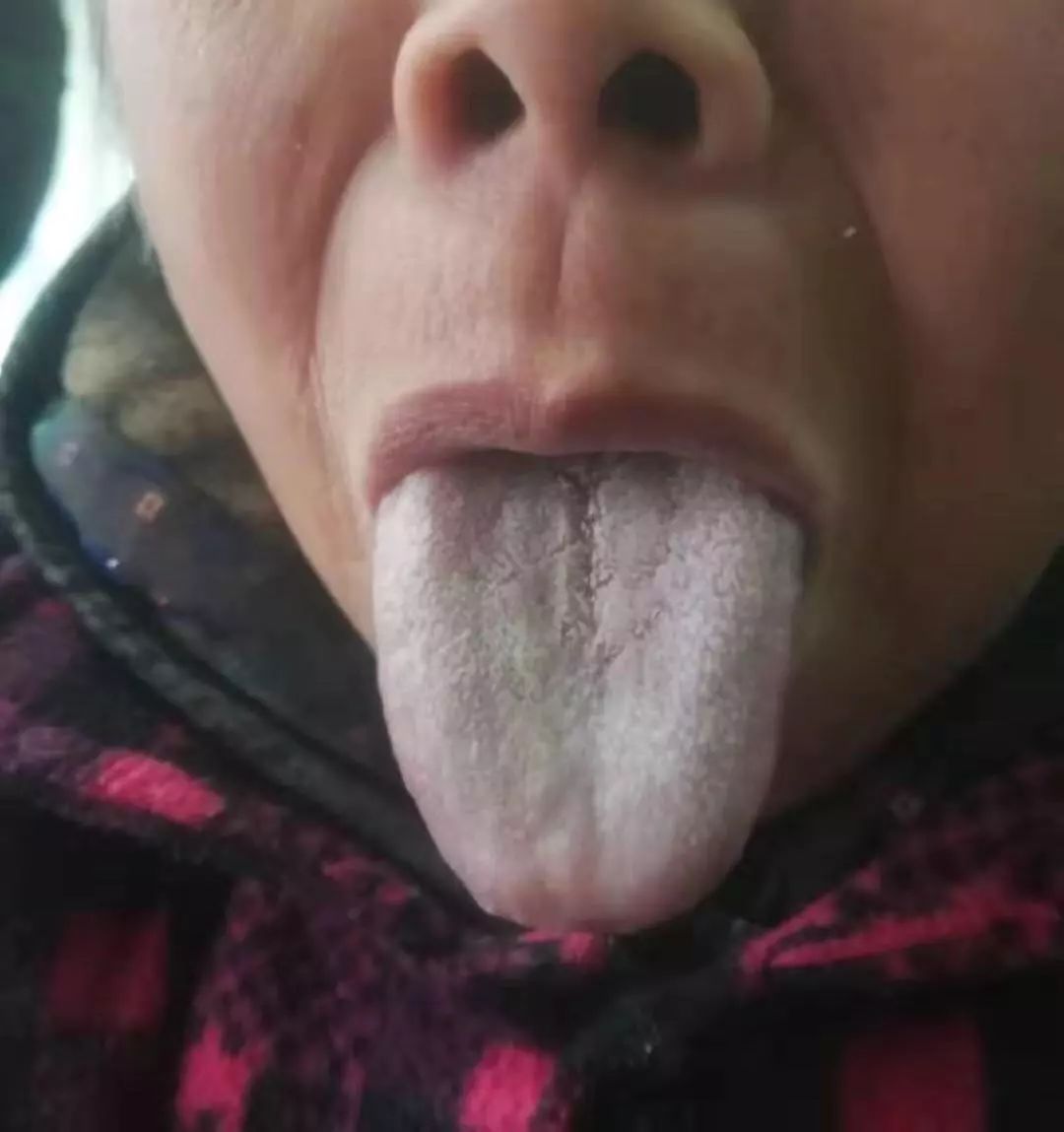
This tongue has appeared previously; it has a very white coating covering the entire tongue, and the tongue body is dark and purplish—indicating cold.
This distinction between cold and heat is relatively easy to identify. The cold appears heavy, and the dampness is also significant, indicating a yang deficiency with dampness on the tongue.
The human body contains a lot of water (yin). If there is insufficient heat (yang) to support it, this water can become quite cold, and in some areas, it may even freeze. If mixed with impurities, it can become more troublesome. We can understand this tongue photograph as a representation of insufficient internal heat, indicating a deficiency of yang. When yang is insufficient, the movement of water slows down, leading to the emergence of cold dampness.
Thus, individuals with significant cold may have a tender tongue coating that appears moist or white and lustrous, indicating yang deficiency with cold dampness. If a person has a deficiency of yang and significant dampness, the tongue may not show a very obvious dark purple color, but rather appear predominantly watery, as seen in the following image.
no.2
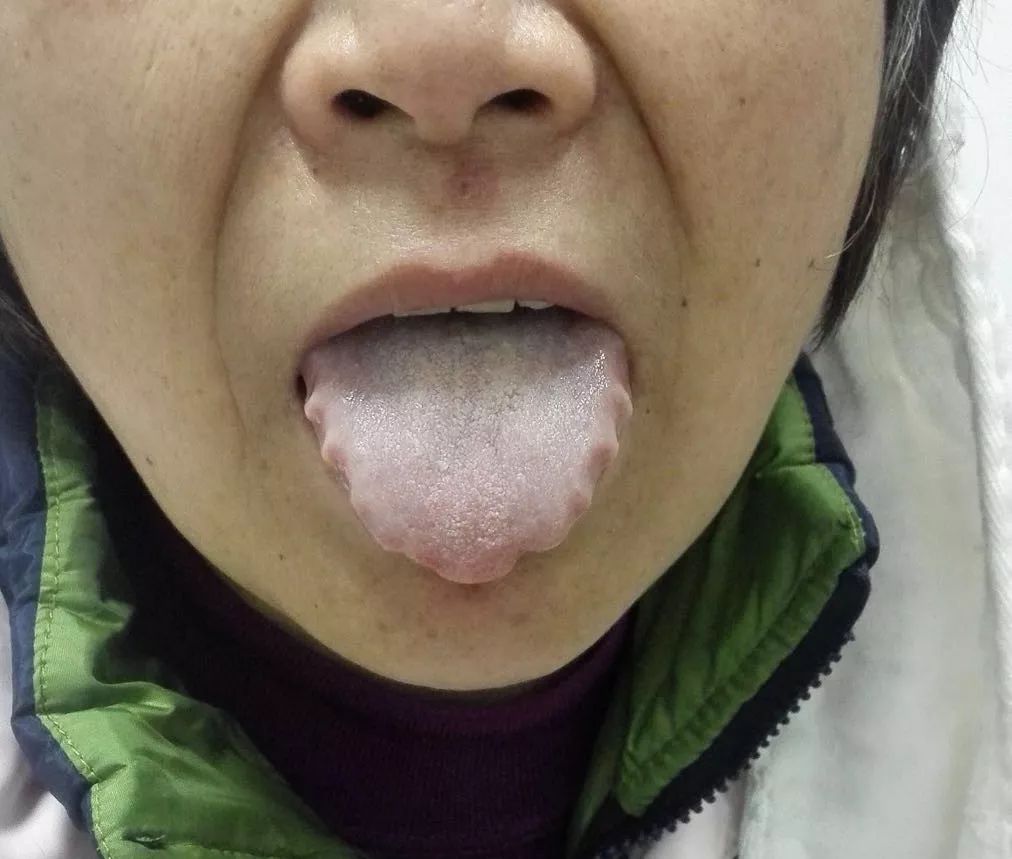
This patient also has a yang deficiency, indicating a constitution that is relatively deficient and cold. However, the serrated tongue coating suggests significant stagnant heat within the body. In terms of constitution, this can be classified as kidney deficiency with dampness and liver stagnation. The kidney is deficient and cold, dampness is heavy, and the liver is severely qi-stagnated, making it particularly prone to heat.
When it reaches this stage, eliminating dampness becomes the primary goal, which also means protecting yang. Promoting yang is not just about warming but also about facilitating urination. This is one method. Facilitating urination is merely one treatment approach; as long as the goal of promoting and protecting yang is achieved, facilitating urination or bowel movements is acceptable.
no.3
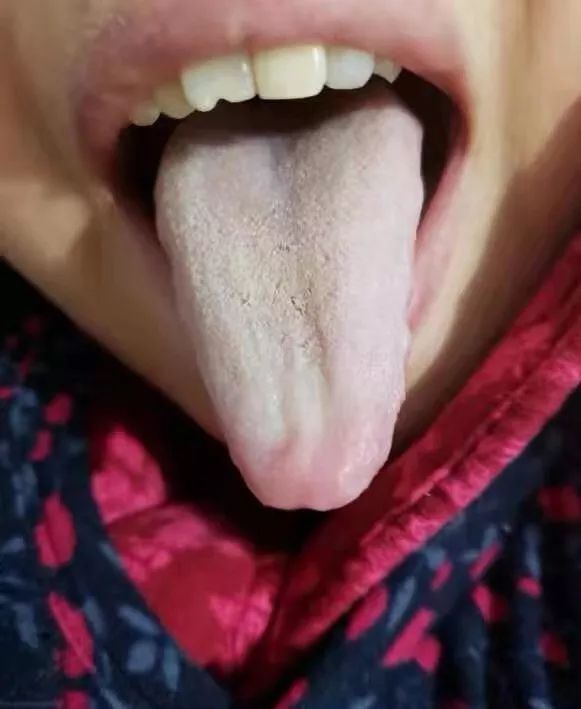
This image is difficult to interpret. This is a tongue photograph of a patient with multiple metastatic tumors, who has not undergone Western medical treatment, surgery, or chemotherapy, presenting a relatively original tongue image.
It appears somewhat similar to the first image, both having a white coating covering the entire tongue, with only the tip exposed. However, this tongue is still cold. Based on the case, it can be inferred that internal cold has solidified, manifesting externally as a state of transformed heat. It is worth mentioning that the vast majority of cancer patients exhibit varying degrees of heat signs, often presenting as false cold with heat. However, how to manage this cold and heat clinically is a significant area of study, and often requires a nuanced approach rather than a blunt one.
This tongue coating appears granular and somewhat dry, indicating the presence of some stagnant heat. It is important to note that there is a white area near the tip of the tongue, which is not tongue coating but rather indicates a pale tongue body. This phenomenon currently lacks a particularly good explanation; for this patient, it is temporarily interpreted as yang deficiency with solidified metal.
no.4
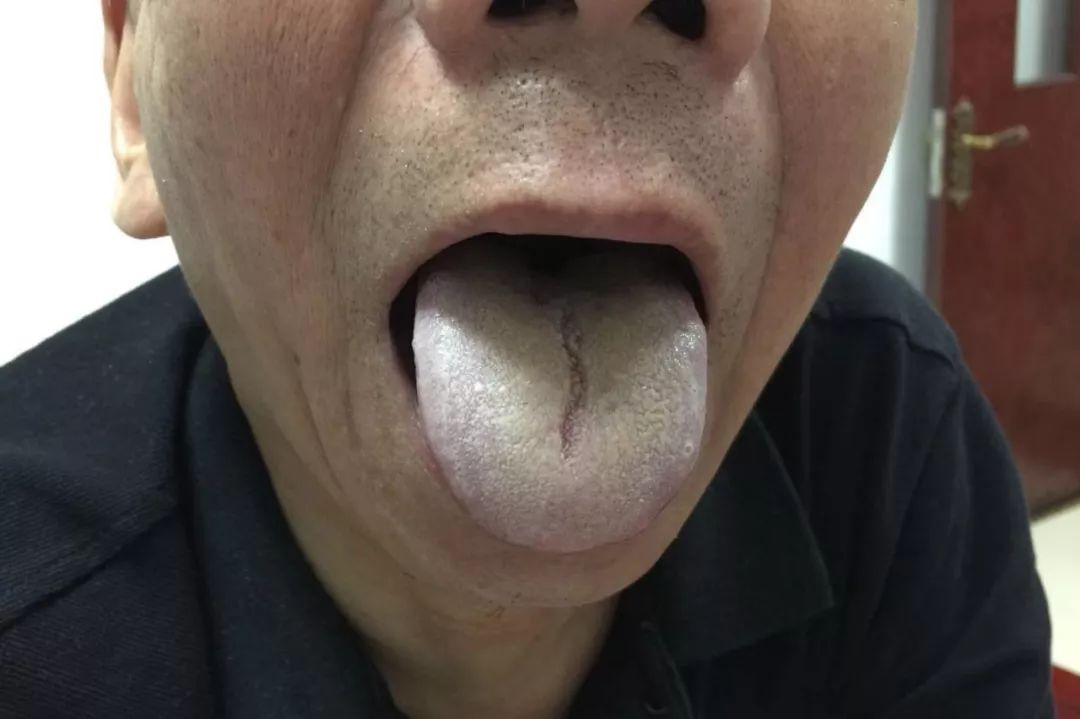
This patient has also been discussed in the moxibustion article, as they are quite typical, so I will mention them again today.
Cold dampness is the root cause, accompanied by damp-heat.Many may wonder how a person can have both cold dampness and damp-heat. This person is like a three-layered cup of water: the middle layer is damp, the bottom is cold, and the top is hot. The middle dampness acts as a barrier, obstructing the flow of heat and cold, resulting in this tri-partite situation.
Therefore, such individuals are prone to spleen and stomach issues, leading to insomnia. If we use heart-nourishing and calming medications, the effect will certainly be poor. As long as we clear the obstruction in the middle, that is, treat the spleen and stomach, the insomnia will naturally improve.
no.5
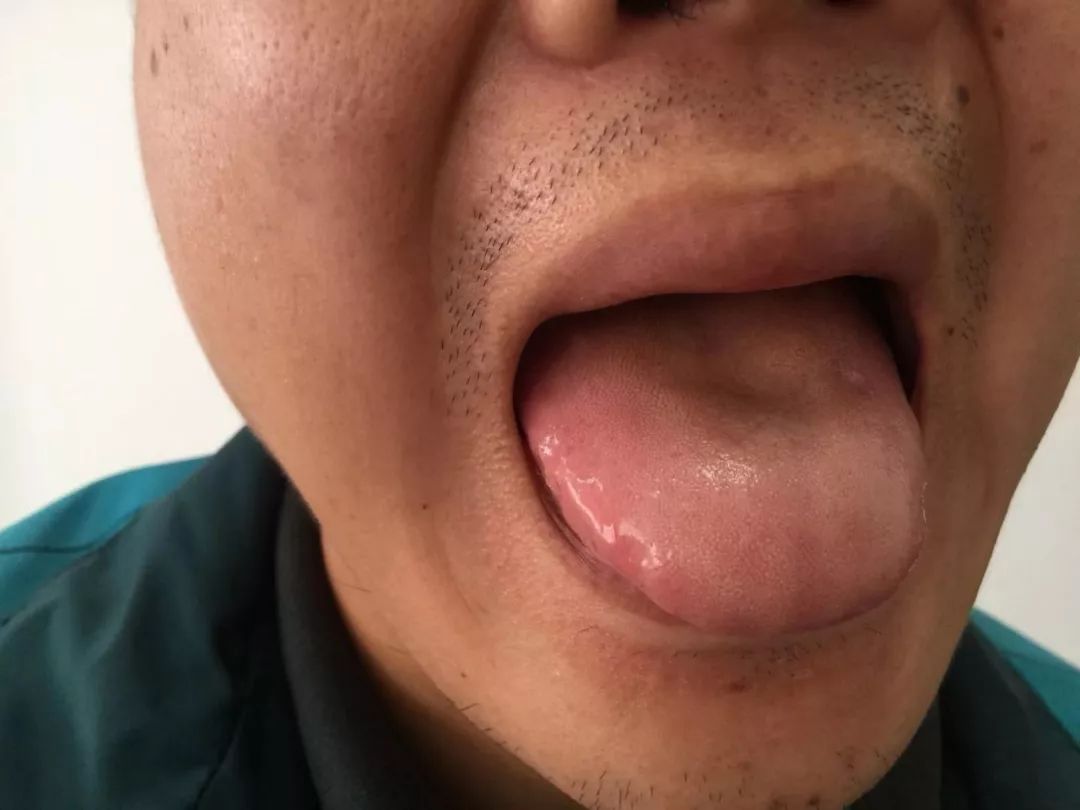
This tongue coating has also appeared previously. The tongue appears swollen, and the coating is relatively dense. We refer to this as “damp stagnation generating heat,” indicating that there is too much water, all crowded together, resulting in stagnant heat.
Imagine a 10 square meter room that can comfortably accommodate two people, but now it is crowded with twenty. How can the air quality be good? How can the temperature remain low?
Thus, this constitution resembles one where dampness is heavy and tightly packed, leading to the generation of heat.
no.6
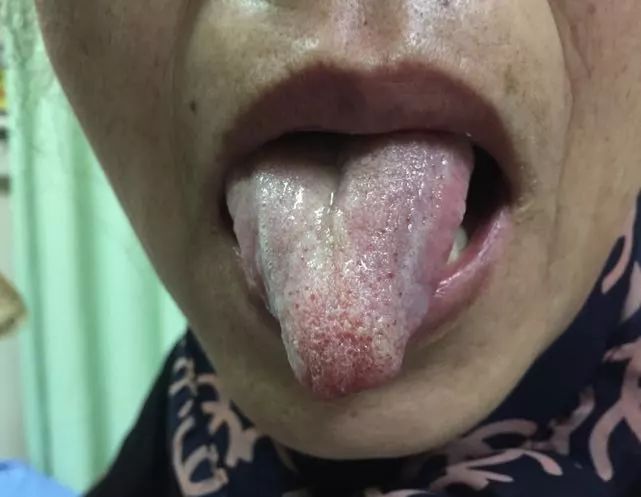
This tongue primarily aims to illustrate the tip. In fact, other areas are also quite typical, with a depression from the middle to the root and a yellow-white coating covering it, indicating a significant deficiency. The dampness and stasis are also quite severe.
The tip of the tongue is very prominent, with red spots all over and a somewhat dry feeling. Such patients generally experience qi stagnation in the heart, often characterized by overthinking, which may lead to heart disease, mental health issues, or insomnia.
no.7
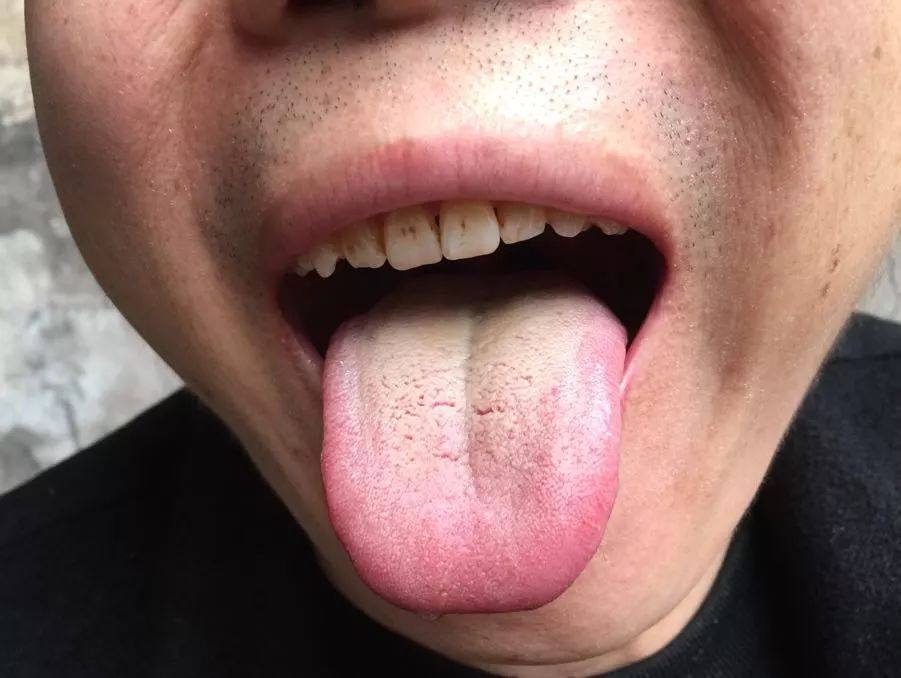
The previous image showed stagnant heat in the heart, while this one shows heat in the lower jiao. Image 8 depicts damp-heat in the middle. This is primarily determined by the location of the yellow greasy coating. For instance, the yellow greasy coating at the root of the tongue in men may indicate urological diseases, lower back issues, or skin diseases of the lower limbs. In women, it may indicate gynecological inflammation, lower back issues, urological diseases, or skin diseases of the lower limbs. This is just a brief overview; specific cases still require analysis based on the actual patient.
no.8
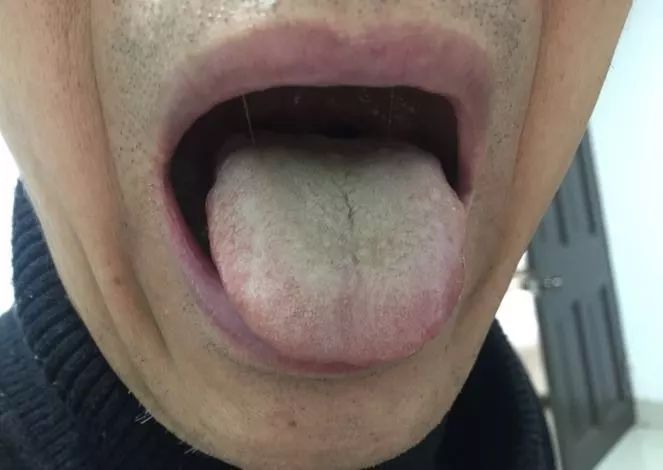
This yellow greasy coating is primarily located in the middle of the tongue, with some at the root. If the thick greasy coating extends from the middle to the root, it may indicate either spleen deficiency with dampness or kidney deficiency with dampness, or dampness transforming in the jueyin area. Regardless of the type of dampness, it is likely to generate heat.
The spleen and stomach are located at the center of the body and are directly responsible for the management of water and fluids. Dampness tends to flow downward, so if the function of the spleen and stomach is weakened, the water will inevitably flow downward, primarily affecting the kidneys and liver and their respective areas.
Therefore, when encountering such tongue coatings, one can consider these situations in advance, serving as a form of prediction.
no.9
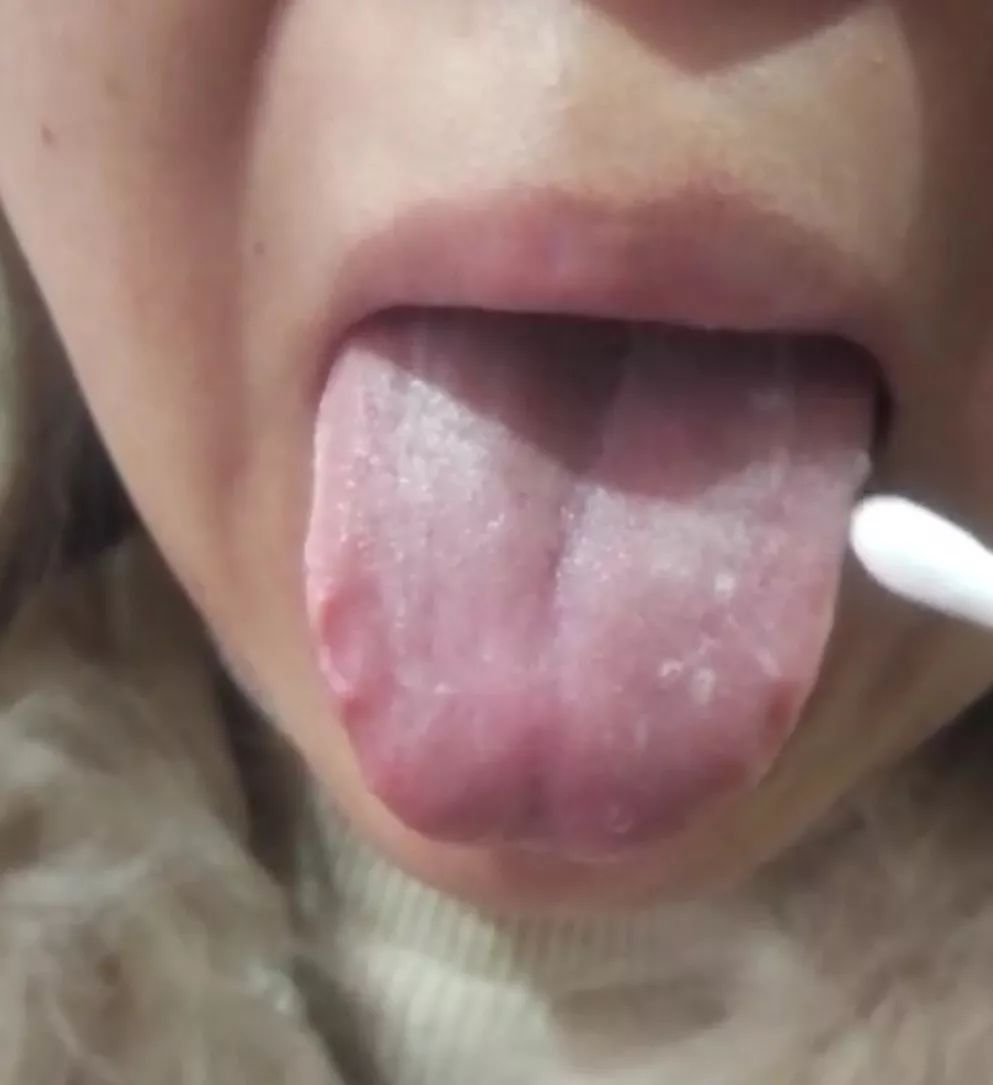
This tongue coating was not captured well and appears somewhat blurry. The main focus is on the two sides, which show faint white saliva. This is commonly seen in cases of yang deficiency or liver stagnation.
This patient exhibits this tongue coating primarily reflecting liver qi stagnation. The tongue surface is relatively smooth with little coating, but the imprints of the teeth are still visible, indicating spleen deficiency with dampness, and the wood element is somewhat stagnant, with some depletion of kidney essence.

That concludes today’s discussion on tongue diagnosis regarding cold and heat. We primarily discussed several typical tongue coatings representing true cold and false heat, as well as the heat manifestations in the upper, middle, and lower parts of the body.
In clinical practice, there are many forms of tongue presentations, and I can only select those I have encountered that are relatively typical and provide a simple explanation.
Editor: Jiang Linfeng
Image and Text Layout: Meng Weiguo
Revised by: Wang Zheteng Physician
Reviewed by: Jiang Lingxia, Zheng Xiaole
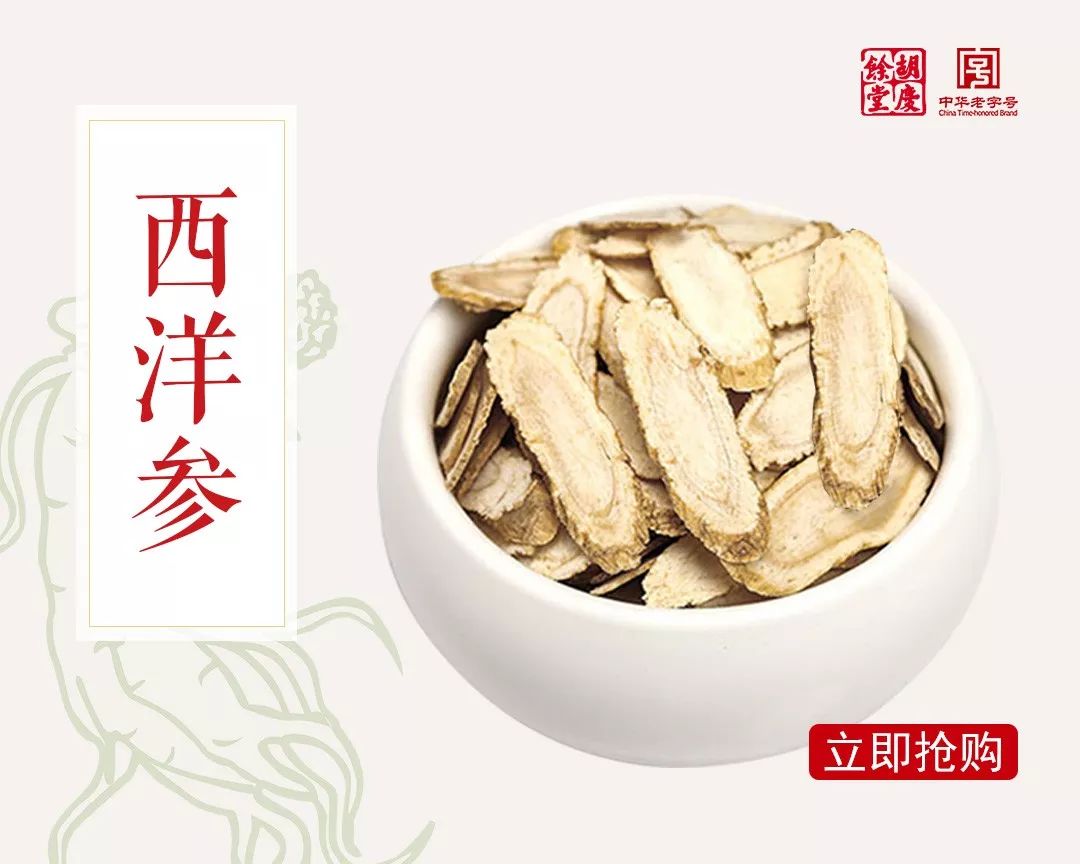



Selected Past Articles
-
Series on Tongue Diagnosis
-
The Magical Aroma Pouch
-
These 6 Reasons May Cause You to Develop Gallstones
-
Does Long-Term Vegetarianism Affect Health?
-
What is a Bone Spur? What to Do if You Have One?
-
The Nine Major Misconceptions About Treating Diabetes, How Many Do You Know?
-
Correct Standing, Sitting, and Lying Postures are the Foundation of Spinal Health
-
If You Like Drinking Yogurt, Come and Take a Look
-
As Spring Arrives, How to Prevent Allergic Asthma
-
Common Misconceptions About Drinking Tea in Spring
